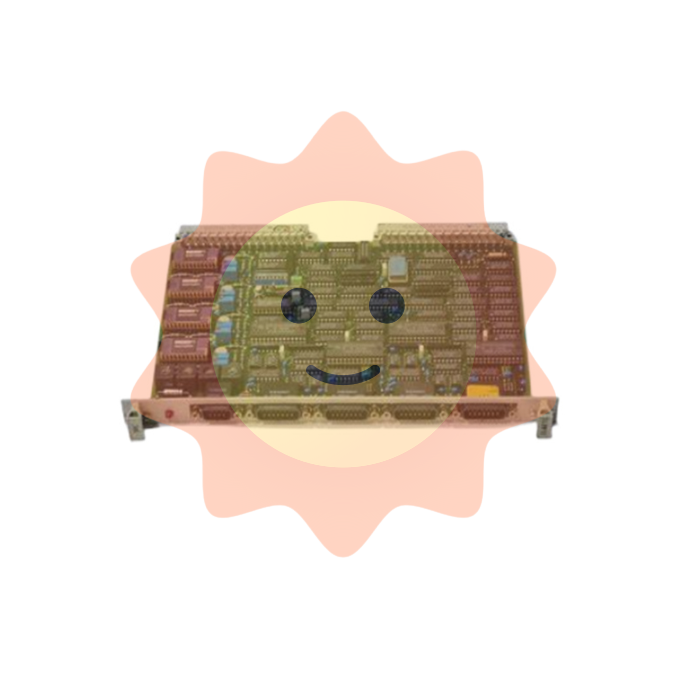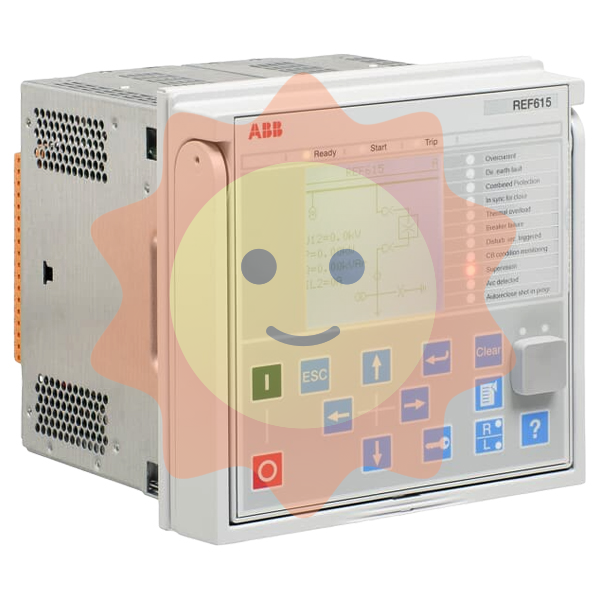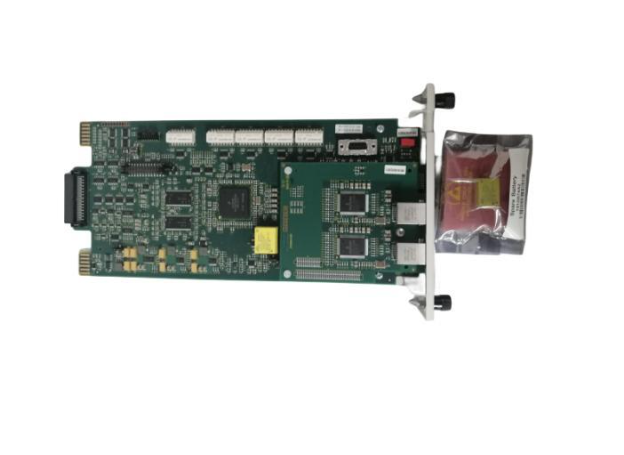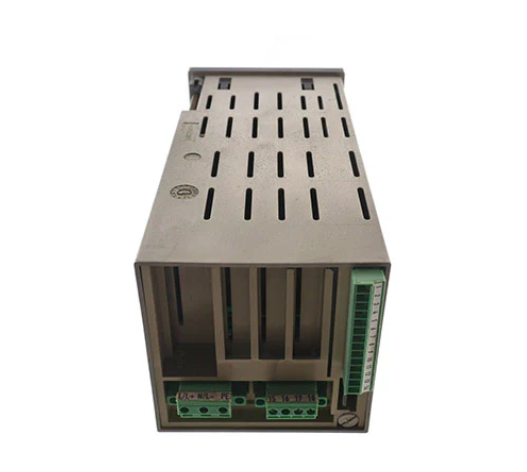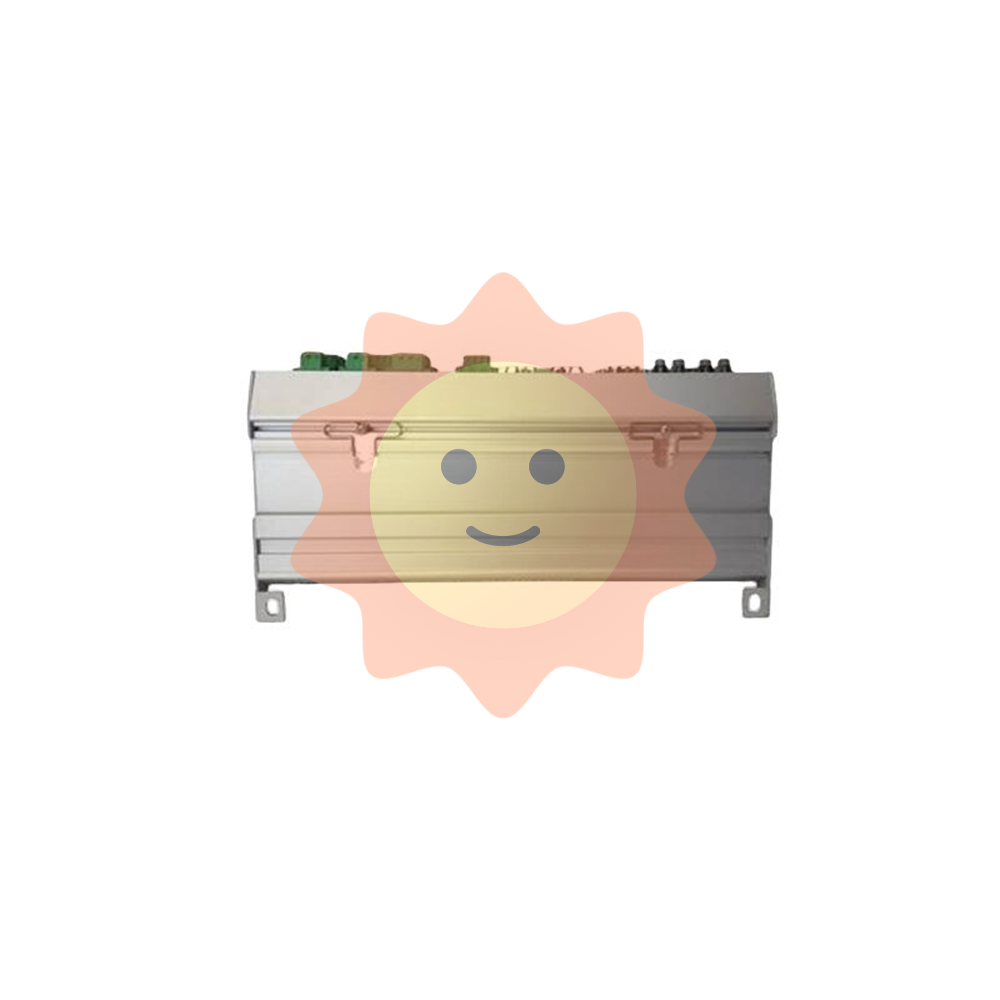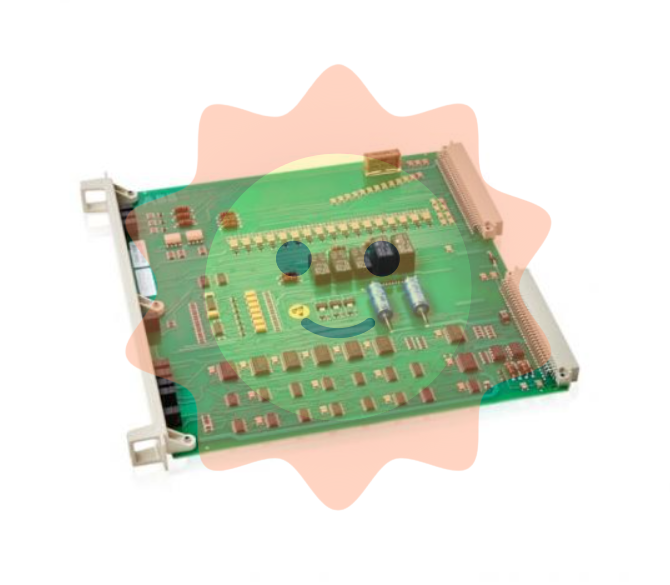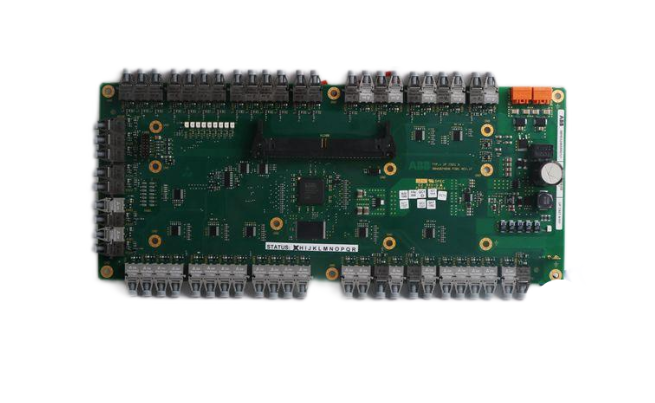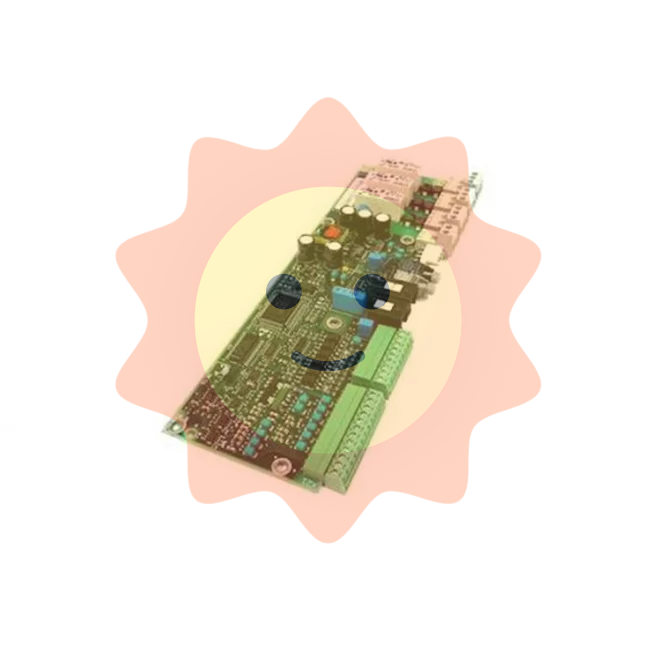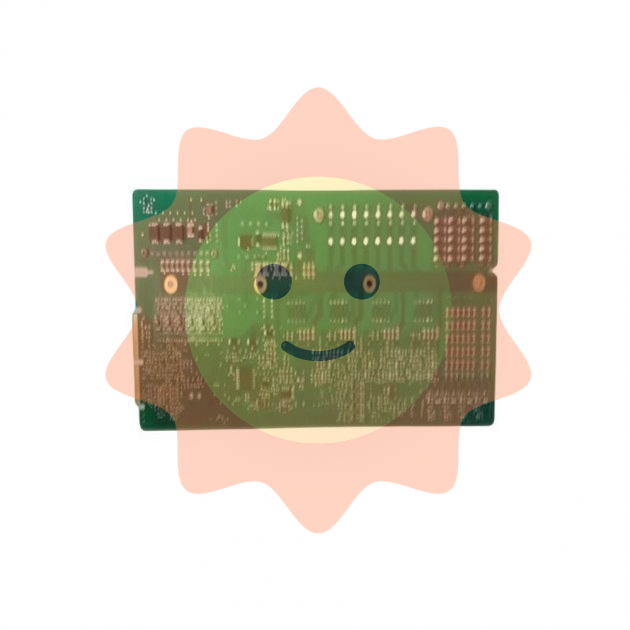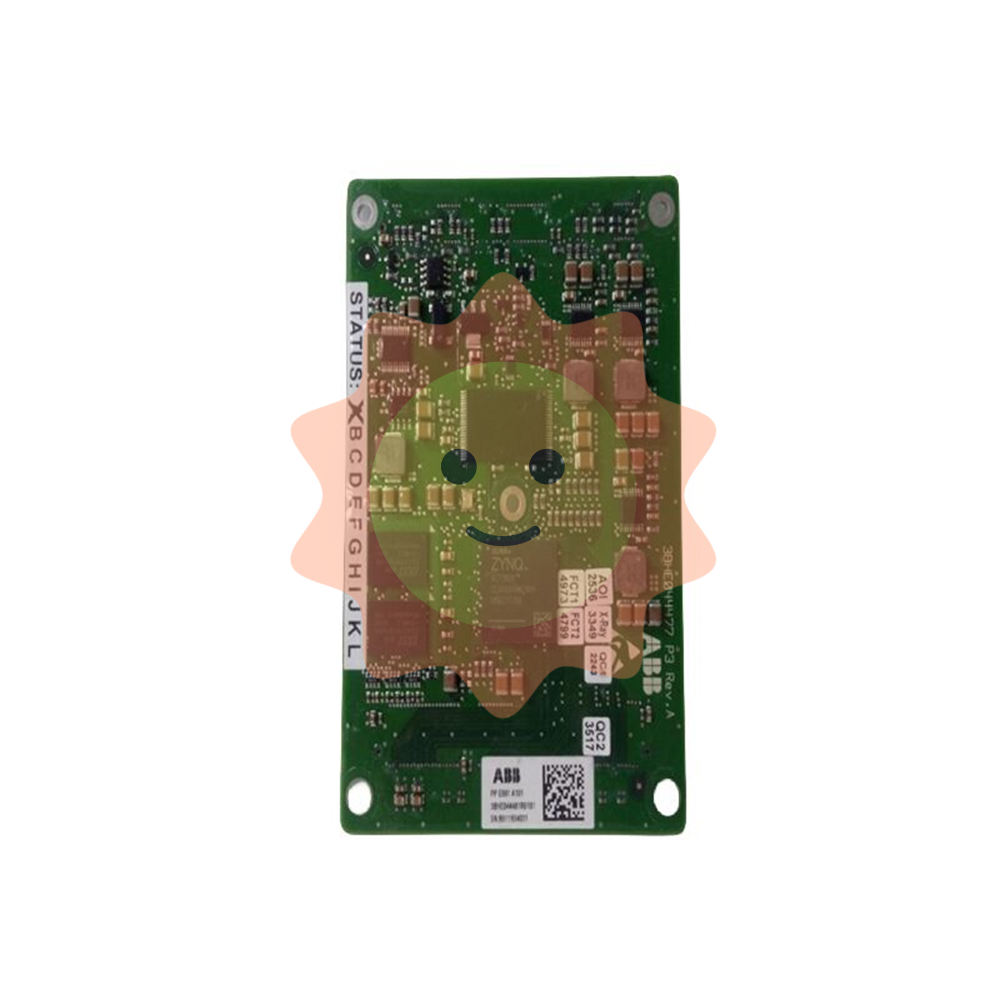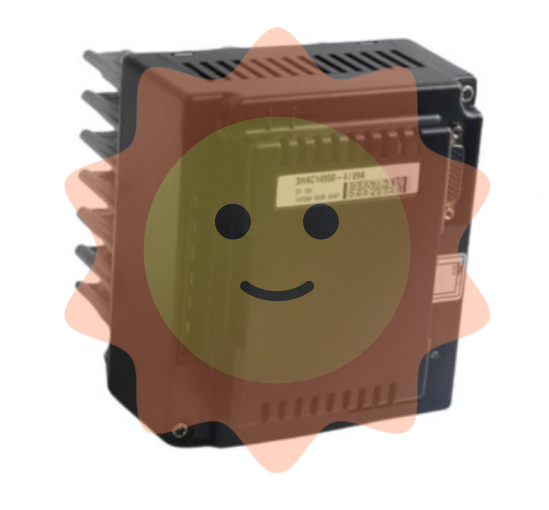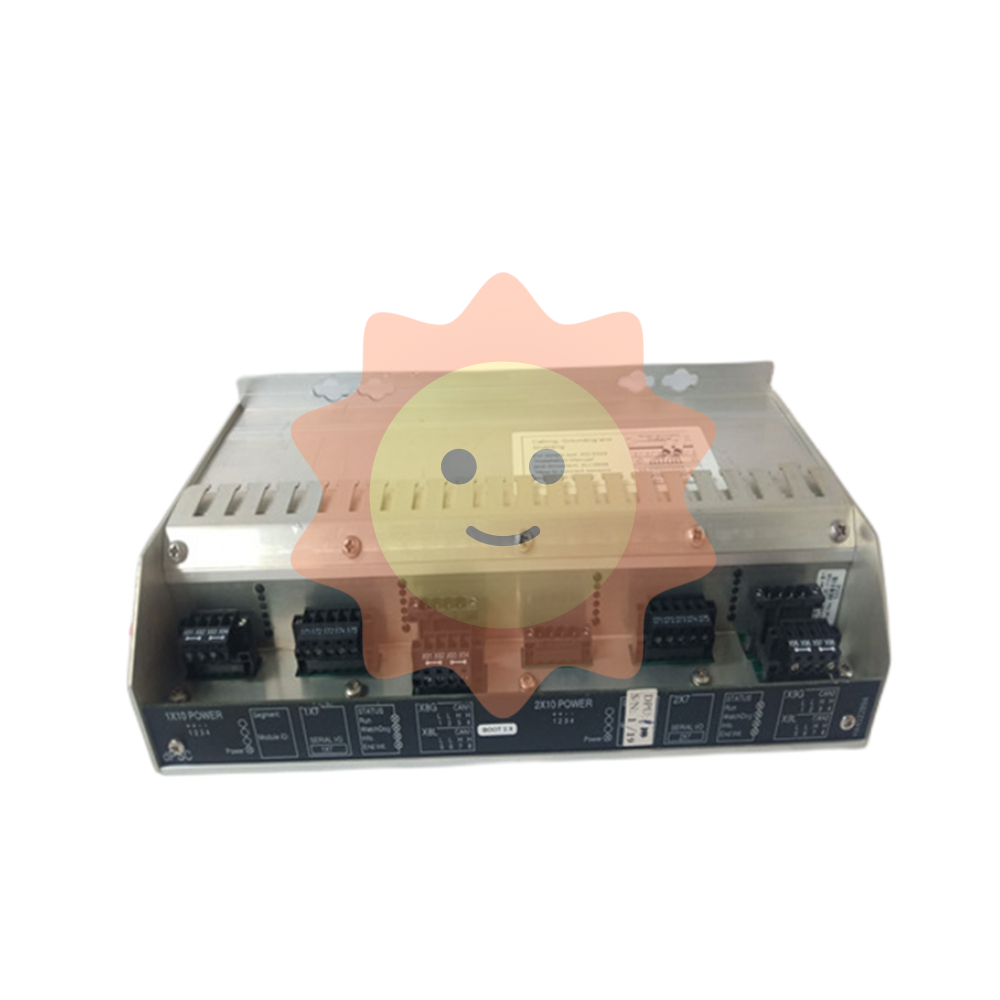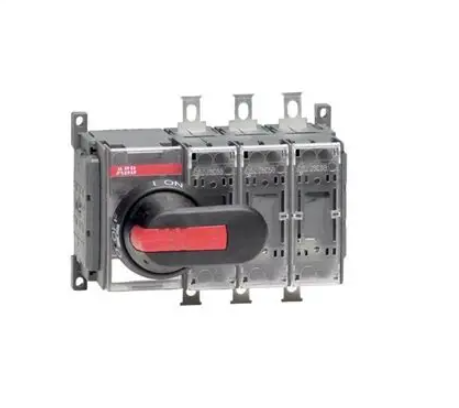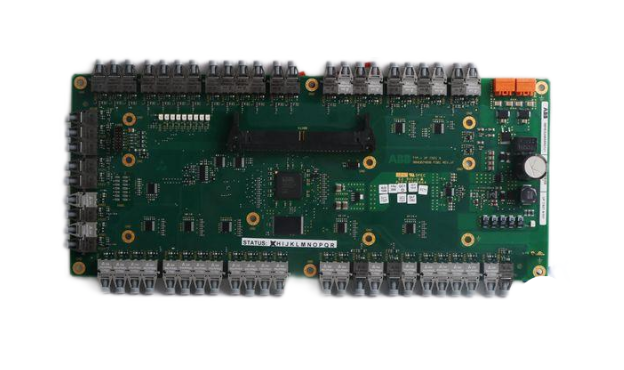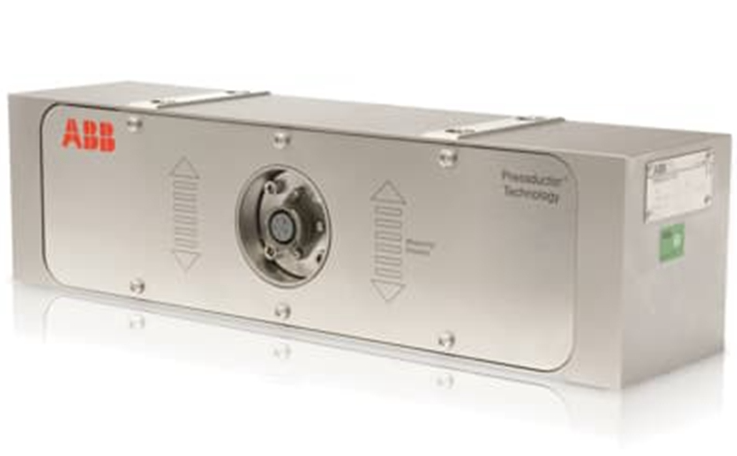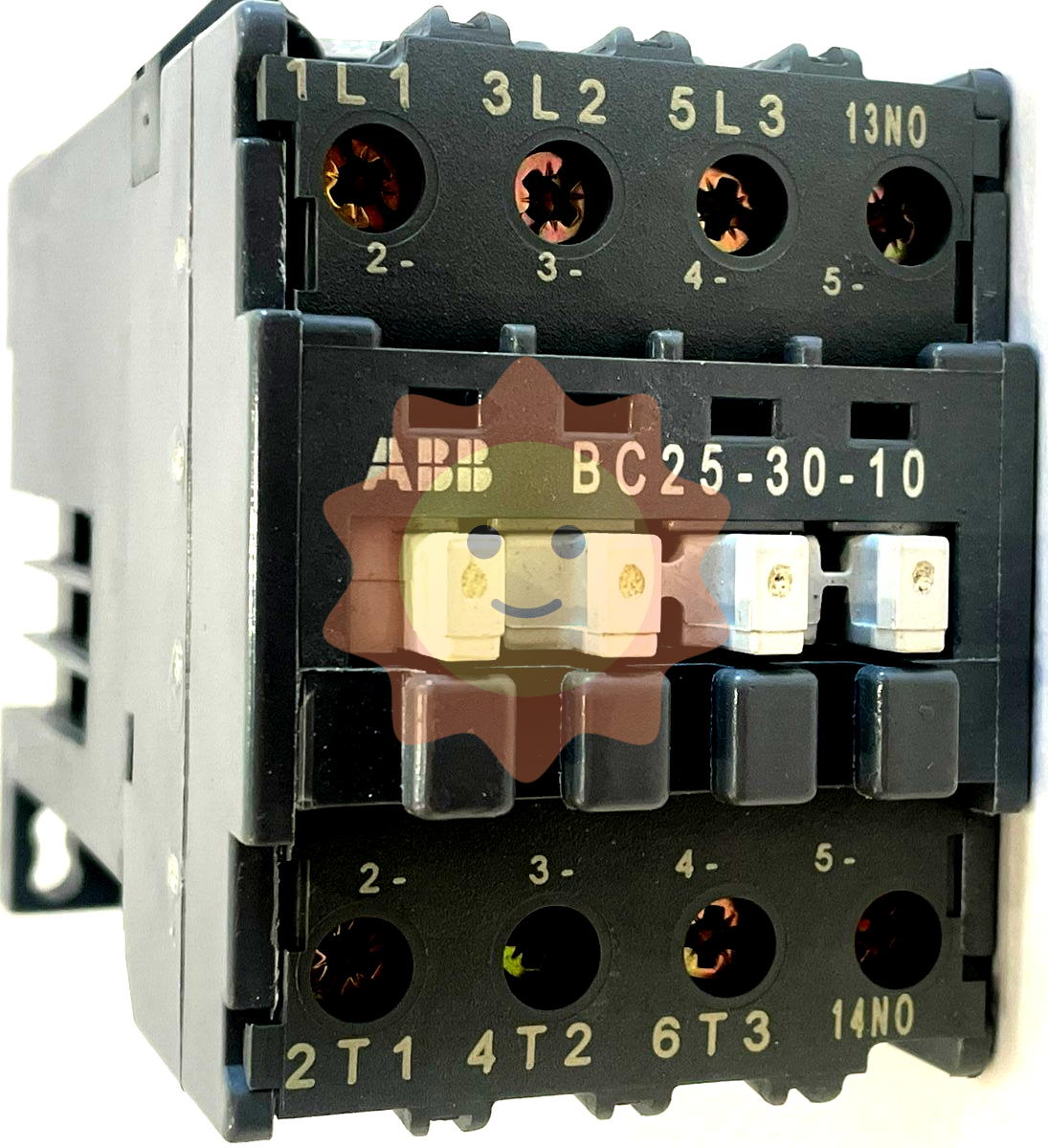ZYGO Laser Interferometer Accessory Guide OMP-0463AM
Clarify the accessory requirements for different measurement scenarios (such as transmission through the plane for planar measurement and transmission through the sphere for spherical measurement);
Correct selection (such as matching accessory specifications based on interferometer model and measuring aperture), installation and debugging (such as optical alignment, mechanical fixation);
Maximizing accessory functionality (such as improving measurement accuracy through isolation tables and achieving automated measurement through programmable stages).
ZYGO Laser Interferometer Accessory Guide OMP-0463AM
Core positioning and scope of application
1. Positioning and Value
This manual should be an authoritative guide for the accessories of Zygo laser interferometers, with the core goal of helping users:
Clarify the accessory requirements for different measurement scenarios (such as transmission through the plane for planar measurement and transmission through the sphere for spherical measurement);
Correct selection (such as matching accessory specifications based on interferometer model and measuring aperture), installation and debugging (such as optical alignment, mechanical fixation);
Maximizing accessory functionality (such as improving measurement accuracy through isolation tables and achieving automated measurement through programmable stages).
2. Applicable product scope
Based on the Zygo laser interferometer product line, the core host models covered in the manual are speculated as follows:
Key accessories for core application scenarios of interferometer series
GPI series (such as GPI XP, GPI Pro) for measuring large aperture optical components (4-18 inches), such as flat mirrors, spherical lenses, large transmission planes/spheres, heavy-duty stages, and vibration isolation systems
The VeriFire series (such as VeriFire MST, VeriFire Sphere) provides high-precision wavefront analysis and non spherical measurement for optical lenses, high-resolution laser resonant cavity cameras, non spherical dedicated transmission components, and dynamic measurement modules
NewView series (such as NewView 5000, NewView 7000) micro morphology measurement (MEMS, microstructure surface), roughness/step height detection high magnification microscope objective (2.5X-100X), white light scanning module, precision Z-axis drive
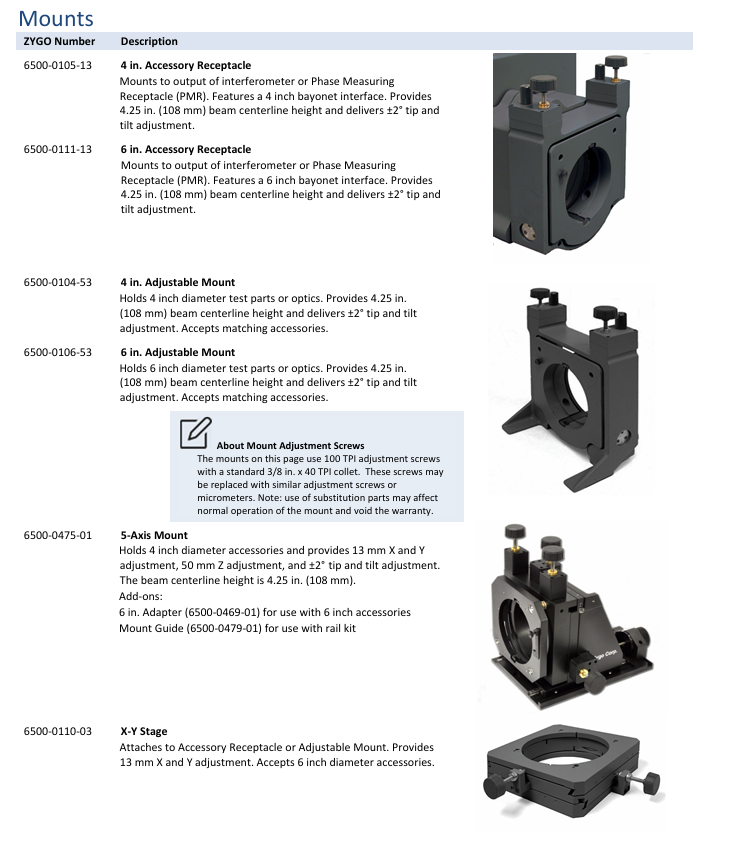
Speculative core content framework
1. Detailed explanation of accessory classification and functions
The manual is likely classified according to the "function and purpose of accessories", clarifying the core functions, technical parameters, and applicable scenarios of various accessories. It is speculated that the classification and representative accessories are as follows:
(1) Optical core accessories
Used to generate reference wavefronts and optimize laser optical paths, it is the "optical foundation" of interferometric measurement, and its core includes:
Transmission Flat (TF):
Function: Generate a planar reference wavefront for detecting the flatness of planar components such as glass plates and mirrors;
Key parameters: caliber (4 inches/6 inches/12 inches), flatness accuracy (such as ≤ 0.02 λ RMS, λ=632.8nm), material (such as ULE ultra-low expansion glass, reducing temperature deformation);
Applicable scenarios: GPI series for measuring large-diameter planar components and calibrating semiconductor wafer flatness.
Transmission Sphere (TS):
Function: Generate spherical reference wavefront for detecting the curvature radius and surface shape error of spherical components (such as lenses and mirrors);
Key parameters: curvature radius range (e.g. 10mm-10m), adaptive aperture (e.g. 2-8 inches), numerical aperture (NA, e.g. 0.1-0.5);
Selection criteria: Match the "curvature radius+aperture" of the tested sphere, for example, convex lenses need to choose "concave transmissive sphere", and concave lenses need to choose "convex transmissive sphere".
Objective lens and optical accessories:
Microscopic objectives (NewView series specific): such as 2.5X (large field of view), 50X (high resolution), 100X (ultra-high precision), with parameters including numerical aperture (NA) and working distance (such as 100X objective working distance of 0.3mm);
Polarization components: polarizers and waveplates, used to adjust the polarization state of lasers and adapt to the measurement of polarization sensitive elements (such as polarizers and waveplates);
Filter: such as narrowband filter (632.8nm ± 1nm), reduces environmental noise interference and improves signal-to-noise ratio.
(2) Mechanical auxiliary accessories
Used to fix the measured object, reduce environmental interference, achieve automated movement, and ensure measurement stability and efficiency:
Stage and fixture:
Manual stage: used for small-sized components (such as 1-2 inch lenses), supporting X/Y axis fine adjustment (accuracy ± 1 μ m) and θ rotation (± 0.1 °);
Programmable stage (such as Zygo Motorized Stage): supports automatic movement of X/Y/Z axes (with a repeat positioning accuracy of ± 0.5 μ m), and is compatible with multi position automatic measurement (such as wafer multi chip detection);
Special fixtures: such as vacuum suction cups (fixing transparent components), magnetic fixtures (fixing metal base components), and centering fixtures (ensuring that the center of the spherical component is coaxial with the interferometer optical axis).
Vibration isolation system:
Passive isolation table: such as Zygo Standard Isolation Table, which isolates low-frequency vibrations (1-10 Hz) through spring/damping structures and is suitable for laboratory environments;
Active isolation table: such as Zygo Active Isolation System, which detects vibration in real-time through sensors (response time<1ms) and actively cancels it out, suitable for complex vibration environments (such as production lines and multi device laboratories);
- EMERSON
- Honeywell
- CTI
- Rolls-Royce
- General Electric
- Woodward
- Yaskawa
- xYCOM
- Motorola
- Siemens
- Rockwell
- ABB
- B&R
- HIMA
- Construction site
- electricity
- Automobile market
- PLC
- DCS
- Motor drivers
- VSD
- Implications
- cement
- CO2
- CEM
- methane
- Artificial intelligence
- Titanic
- Solar energy
- Hydrogen fuel cell
- Hydrogen and fuel cells
- Hydrogen and oxygen fuel cells
- tyre
- Chemical fiber
- dynamo
- corpuscle
- Pulp and paper
- printing
- fossil
- FANUC
- Food and beverage
- Life science
- Sewage treatment
- Personal care
- electricity
- boats
- infrastructure
- Automobile industry
- metallurgy
- Nuclear power generation
- Geothermal power generation
- Water and wastewater
- Infrastructure construction
- Mine hazard
- steel
- papermaking
- Natural gas industry
- Infrastructure construction
- Power and energy
- Rubber and plastic
- Renewable energy
- pharmacy
- mining
- Plastic industry
- Schneider
- Kongsberg
- NI
- Wind energy
- International petroleum
- International new energy network
- gas
- WATLOW
- ProSoft
- SEW
- wind
- ADVANCED
- Reliance
- YOKOGAWA
- TRICONEX
- FOXBORO
- METSO
- MAN
- Advantest
- ADVANCED
- ALSTOM
- Control Wave
- AB
- AMAT
- STUDER
- KONGSBERG
- MOTOROLA
- DANAHER MOTION
- Bently
- Galil
- EATON
- MOLEX
- Triconex
- DEIF
- B&W
- ZYGO
- Aerotech
- DANFOSS
- KOLLMORGEN
- Beijer
- Endress+Hauser
- MOOG
- KB
- Moxa
- Rexroth


Email:wang@kongjiangauto.com



























































